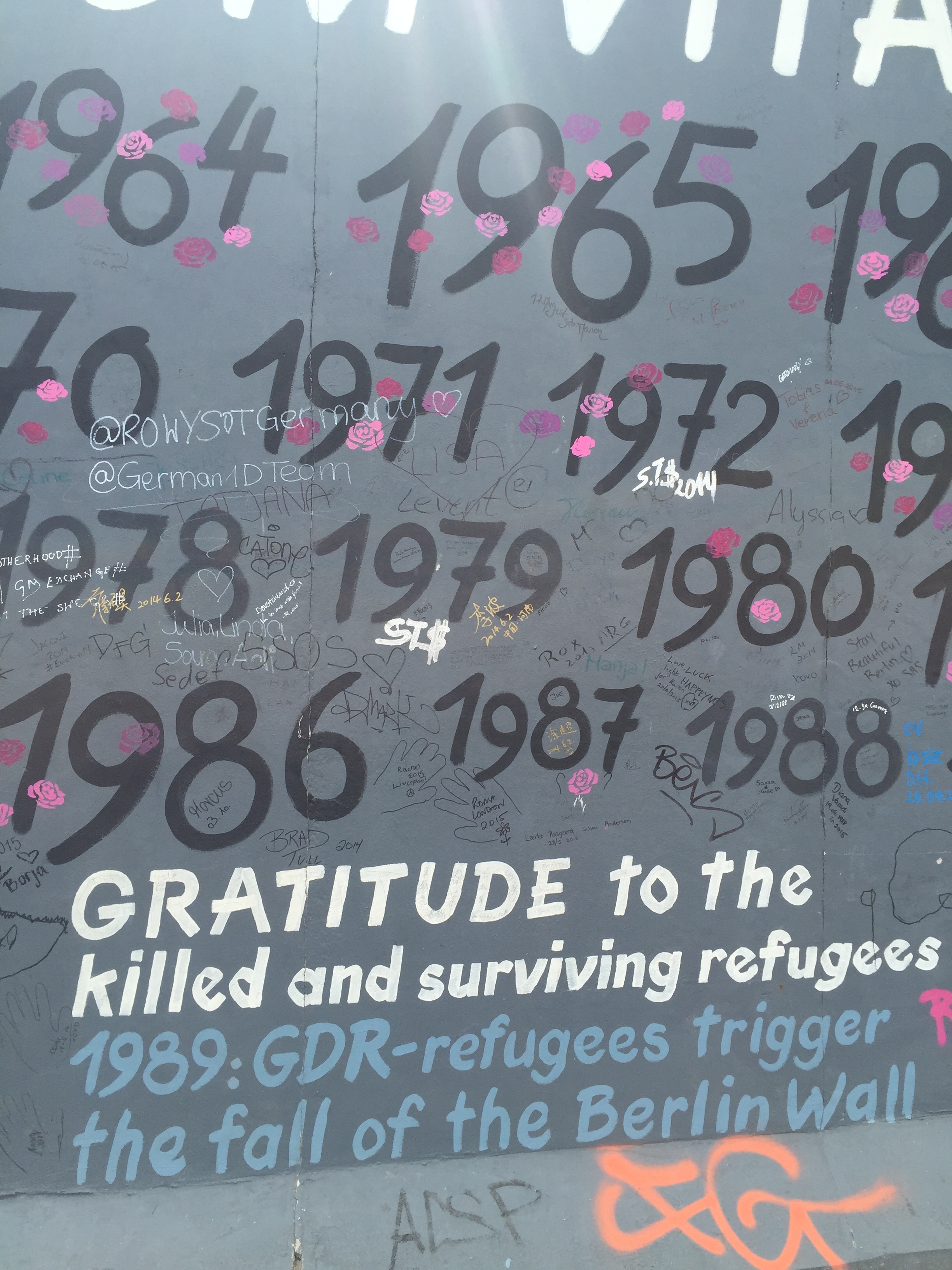
East Side Gallery
In the heart of one of Europe’s most vibrant, edgy and artistic cities, you can find the East Side Gallery of Berlin. Germany’s capital city attracts thousands of visitors purely through it’s notable history and the plethora of artistic attractions to behold. Museum Island – boasting such delights as the Staatliche Museen zu Berlin, which hosted the beautiful Expressionism – Impressionism exhibit this summer – is considered by many to be home to the city’s top attractions. Undoubtedly, however, the everyday ambler will find themselves drawn to and mesmerised by the Berlin Wall – more commonly known as the East Side Gallery.
Stretching a mighty one thousand three hundred and sixteen metres, it wins the gold medal of being the longest open-air gallery in the world. The wall is historically acclaimed as it formed part of the border between East and West Berlin. It consists of over one hundred murals presenting a range of artistic applications and visual spectaculars. Despite each mural being unique and different, all of them are created with the same overriding passion and intent in their celebration of the collapse of the wall.
The story behind the Berlin Wall is that of upmost historical importance: the purpose of the wall was to keep those from the West entering Eastern Germany and threatening the social state. The wall remained erected until the 9th of November 1989, when the head of the East German Communist Party gave citizens of the German Democratic Republic the freedom to traverse the border as and when they pleased.
The exclusive and special quality about the Berlin wall is that the structure has lived on as a celebration of a real life event and stands as a testament to the history of the country. The re-invention of the wall as a creative masterpiece invites people to interact with a historical monument in a way that would not have been attempted decades ago – thus further enhancing the social developments the country has created.

East Side Gallery – My God, help me to survive this deadly love
One of the wall’s most acclaimed pieces ‘My God, Help me to survive this deadly love’ depicts Erich Honecker and Leonid Brezhnev kissing, in what is known as a classical fraternal embrace. This mesmeric graffiti piece by Dmitri Vrubel was created in 1990 and was inspired by a photograph taken in 1979. Initially one confuses it for a celebration piece of homosexuality but it instead snapshots the political festivity between two men on the thirtieth anniversary of the foundation of the German Democratic Republic, which freed citizens from the Eastern side of the wall.
The East Side Gallery is a precious site and the association has worked since 1996 to preserve and protect it accordingly. 2009 saw the repainting of all one hundred and one images. However, the East Side Gallery receives over three million visitors a year and, as a result, vandalism is still present with signatures and doodling over pieces in abundance.
The wall gives a voice to the artists and allows them to socially comment and construct opinions in a creative format. One mural states ‘Gratitude to the killed and surviving refugees’ and acknowledges that the GDR-refugees of 1989 triggered the fall of the Berlin Wall. Alongside this powerful text, large black numbers have been painted amongst graffiti signatures, representing each year that the wall was standing. This piece stands as testimony to the fact that the wall continues to promote artistic talents whilst simultaneously acting as a reminder of what happened years ago.

East Side Gallery
The wall celebrates a multitude of artists congregating together to create a walking tour of imaginative masterworks. For this reason, the subject matter changes dramatically: from historical and social commentary-based pieces to abstract applications of paint with a versatile colour palette. Walking along the wall, you can be met with classical portraiture shots, only to then be struck by African-style totem figures juxtaposed with a mural of cartoon-esque animated faces.
The East Side Gallery lives as a testament to the conjuncture between the movement of people throughout history and the way that art is used as a social construct to remind people of what has happened in the world. The sheer importance and the influence of art can be understood through the magnificence of the Berlin Wall.